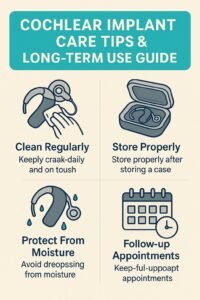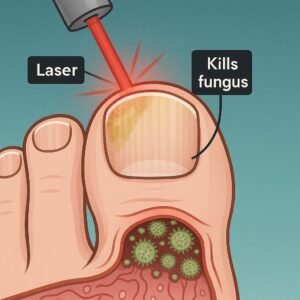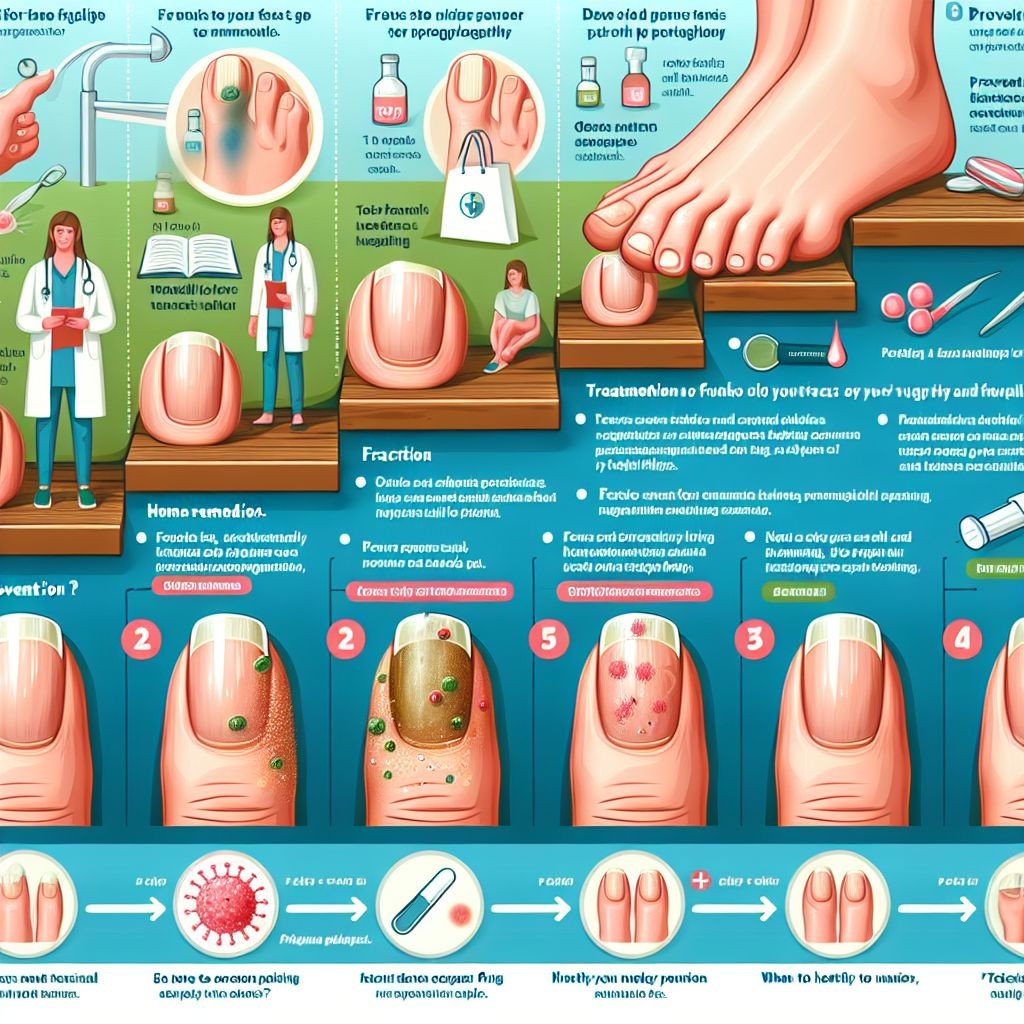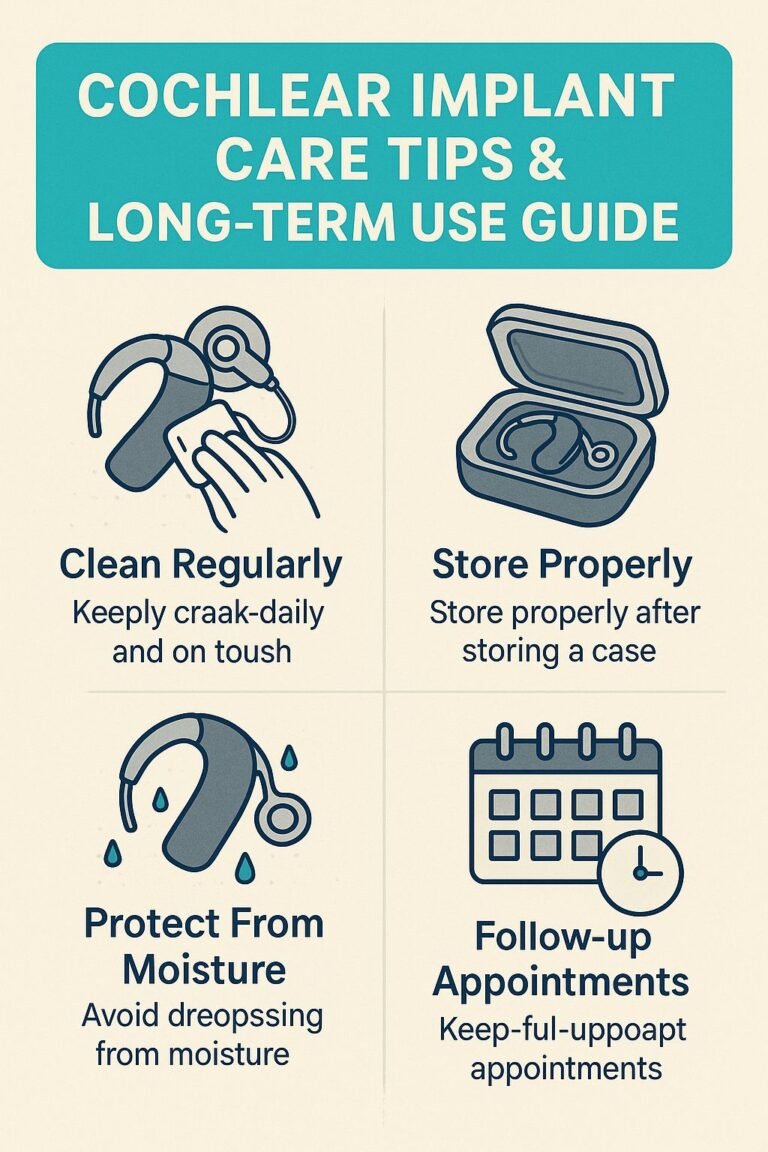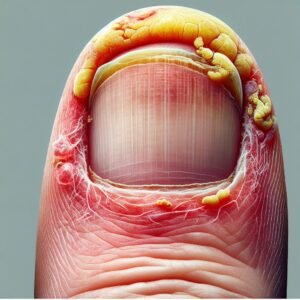Important Points
- Toenail fungus, also known as onychomycosis, often presents as a change in nail color and can result in thickening or cracking of the nail.
- Common causes include moist environments, poor hygiene of the feet, and shared showers or locker rooms.
- Over-the-counter (OTC) treatments such as undecylenic acid and tolnaftate are effective when used consistently and as directed.
- Natural remedies like vinegar soaks and tea tree oil can be used in combination with OTC treatments for better results.
- Preventive measures like proper hygiene and appropriate footwear are key to avoiding toenail fungus.
What is Toenail Fungus and Why Does it Matter?
Toenail fungus, or onychomycosis in medical terms, is a common condition that affects many people. It’s not just a cosmetic problem; it can cause discomfort and even pain if not treated. The fungus loves warm, moist environments, which makes our feet an ideal target, especially if they’re kept in shoes for long periods of time.
What is Toenail Fungus and What are the Symptoms?
Toenail fungus is a condition that happens when fungi get into the nail or the skin under the nail, which is called the nail bed. The first thing you’ll usually see is a white, brown, or yellow color change in the nail. As the condition gets worse, the nail can get thicker, crack, or crumble, which can make it hard to cut and uncomfortable to wear shoes.
What Causes Toenail Fungus and How to Avoid It
Knowing the causes of toenail fungus is the first step to preventing it. Dermatophytes, a type of fungus that loves warm, moist environments, are often to blame. Walking barefoot in shared showers, locker rooms, or swimming pools can put you at risk. In addition, wearing shoes that are too tight and having feet that sweat a lot can also make you more susceptible.
Those who have issues with their immune system, diabetes, or poor circulation are more susceptible. So, if you fall into these categories, you should take extra care to keep your feet clean and take preventative measures.
Why You Shouldn’t Ignore Toenail Fungus
Leaving toenail fungus untreated is not recommended. It can result in more severe issues, including pain, irreversible damage to your nails, and infections that can spread to other parts of your body. For individuals with diabetes, even a minor injury to the foot can cause significant health problems.
Most of all, untreated toenail fungus can impact your enjoyment of life. It can make you feel self-conscious about exposing your feet and limit your ability to engage in activities you love. That’s why it’s so important to tackle the problem quickly.
Over-the-Counter Solutions for Toenail Fungus
Luckily, toenail fungus doesn’t have to be a permanent problem. There are many successful over-the-counter solutions you can use. These solutions are handy and are available at most pharmacies, letting you start tackling the issue immediately.
Common Over-The-Counter Choices
Undecylenic acid and tolnaftate are two of the most common choices for fast-acting over-the-counter toenail fungus treatments. They are both antifungal and come in a variety of forms including creams, liquids, and sprays.
Let’s quickly compare these options:
| Product | Type | How Often To Apply | When To Expect Results |
|---|---|---|---|
| Undecylenic Acid | Liquid or Cream | 2 times a day | 4-6 weeks for improvement |
| Tolnaftate | Cream or Spray | 2 times a day | 2-4 weeks for improvement |
Undecylenic Acid
Undecylenic acid is a type of fatty acid that has been used for years to treat fungal infections. It’s especially good for toenail fungus because it can get into the nail and attack the fungus directly. To use it, put the liquid or cream on the infected area 2 times a day. Make sure to wash and dry your feet well before you put it on to get the best results. For more information on effective treatments, you can explore best toenail fungus treatment remedies.
Treatments Based on Tolnaftate
Tolnaftate is another potent antifungal agent that halts the growth of fungi. You can find it in creams and sprays, which are easy to apply. Like undecylenic acid, you should use tolnaftate regularly, typically twice a day, to see results. Consistency is vital when treating fungal infections.
How Well It Works and How to Use It
Undecylenic acid and tolnaftate are both effective in treating toenail fungus. However, it’s important to use them as directed on the packaging. Skipping applications or stopping treatment too soon can slow down improvement and let the fungus come back.
Also, it is important to be patient. Depending on how bad the infection is, toenail fungus treatments can take from a few weeks to several months to completely get rid of the infection. So, keep going and don’t get disheartened if you don’t see results right away.
Home Treatments for Toenail Fungus
Even though over-the-counter treatments work well, some people like to use home remedies. You can use these on their own or with over-the-counter treatments to make them work better. Home remedies are usually safe and easy to use, so a lot of people like to use them instead of other options.
How to Use Vinegar Soaks
Many people swear by vinegar, especially apple cider vinegar, as a natural treatment for toenail fungus. The acid in the vinegar makes it hard for the fungus to survive. To try this remedy, mix one part vinegar with two parts warm water and soak your feet in the solution for 20 minutes each day. Make sure to dry your feet well after each soak. For more information on effective treatments, you can explore the best toenail fungus treatment remedies.
By sticking to this straightforward regimen, you can slowly diminish the fungus. Keep in mind, though, that you need to be consistent. Frequent soaks in vinegar can also help soften thick nails, making them easier to cut.
The Wonders of Tea Tree Oil
Tea tree oil is a potent natural solution that is well known for its antifungal and antiseptic properties. It is particularly beneficial for treating toenail fungus. To use tea tree oil, simply apply a few drops directly to the affected nail and the skin around it. This should be done once or twice a day. For those with sensitive skin, it is advisable to dilute the oil with a carrier oil, such as coconut or olive oil, to avoid any skin irritation.
Tea tree oil can gradually help lessen the discoloration and enhance the overall look of the nail over time. But, it’s crucial to remember that it may take a few weeks before you start seeing results, so being patient and consistent is key. For more information on effective treatments, you can explore home remedies for toenail fungus.
Using Baking Soda
Another common household item that can help with toenail fungus is baking soda. It is alkaline and can help to neutralize the acidic environment that fungus loves. You can make a paste with baking soda and water and apply it to the affected nail. Let it sit for about 10-15 minutes and then rinse it off with warm water.
You can also add baking soda to a foot bath. Just dissolve a few tablespoons in warm water and soak your feet for 15-20 minutes. This method can also help reduce foot odor and soften the skin. For more information on effective remedies, check out this guide on the best toenail fungus treatment remedies.
Using Garlic as an Antifungal Treatment
Garlic isn’t just a tasty ingredient in your dishes; it also has antifungal properties that are useful in treating toenail fungus. To use it, crush a few garlic cloves and put the paste directly on the affected area. Cover it with a bandage and let it sit for about 30 minutes before washing it off.
If you’re not a fan of topical treatments, garlic supplements are an excellent alternative. They can help your body fight off the infection from the inside by bolstering your immune system. However, it’s always a good idea to talk to a healthcare professional before starting any new supplements. For more information on effective solutions, check out the best toenail fungus remedies.
Mixing OTC and Home Remedies
Mixing over-the-counter treatments with home remedies can boost the potency of toenail fungus treatment. By doing this, you can attack the fungus from various sides, boosting your odds of success. However, it’s crucial to make sure that the treatments you pick are compatible and won’t cause negative reactions when used in conjunction.
- Apply over-the-counter treatments as instructed, making sure to do so regularly.
- Integrate home remedies into your regimen, like tea tree oil or vinegar foot baths.
- Keep track of your improvement and modify your treatment strategy if necessary.
The most important thing to remember is that it might take some experimentation to find the right combination of treatments. Everyone is different, so don’t be discouraged if something that works for someone else doesn’t work for you. Keep trying different methods until you find what’s most effective.
Top Tips for Mixing Remedies Safely
Combining treatments can be a great way to tackle toenail fungus, but there are a few rules to follow to make sure you’re doing it safely and effectively. Always do a patch test with new topical treatments to make sure you won’t have an allergic reaction or any skin irritation.
Moreover, it’s important to stick to a regular treatment routine. Using your treatments at the same time every day can help you remember to apply them and make sure you don’t skip any applications. This regularity is crucial for getting the best results.
Tracking Your Progress
It’s important to keep track of your progress while treating toenail fungus. Regularly take photos of your nails to monitor any changes or improvements. These photos can be useful in deciding whether a treatment is effective or if you need to change your treatment strategy.
Should you see no change after a few weeks, it might be time to seek advice from a healthcare professional. They can offer you other treatment methods or alternative solutions.
Considerations and Cautions
Even though using multiple treatments can be helpful, it’s important to know the potential dangers and precautions. Some natural remedies, such as essential oils, can cause skin irritation or allergic reactions. As a result, it’s crucial to do a patch test before applying them to larger areas.
- If you’re pregnant or have any underlying health conditions, make sure to talk to your doctor first.
- If you notice any negative side effects, stop using the treatment right away.
- Make sure to store these treatments somewhere your kids and pets can’t get to them.
As long as you follow these safety tips, you should be able to use a mix of OTC and natural treatments to get rid of your toenail fungus.
Keeping Toenail Fungus at Bay
It’s often simpler to prevent toenail fungus than to treat it. By embracing a handful of easy habits, you can drastically cut your risk of getting this annoying condition. Good foot hygiene and clever decisions can do wonders in keeping your feet in good health and free from fungus. For more information on effective prevention and treatment options, check out this guide on best toenail fungus treatment remedies.
Keeping Your Feet Clean
One of the best ways to prevent toenail fungus is to keep your feet clean and dry. You should wash your feet every day with soap and water and make sure to dry them completely, especially between your toes. Fungi love to grow in moist environments, so keeping your feet dry is key.
Keeping your nails short and trimmed regularly can help keep fungi from getting under your nails. Always use clean, sharp nail clippers and never share them with others to avoid spreading the infection.
Choosing the Right Shoes and Socks
The shoes you wear can play a significant role in preventing toenail fungus. It’s best to wear shoes that are breathable to allow air to circulate and minimize the accumulation of moisture. Shoes that are too tight can cause pressure and harm your nails, so it’s best to avoid them.
Opt for socks made of natural materials such as cotton or wool, as they help to absorb moisture away from your skin. Replace your socks every day, or more often if your feet are particularly sweaty.
Steer Clear of Communal Damp Spaces
Communal damp spaces, like public showers, locker rooms, and swimming pools, are breeding grounds for fungi. Always remember to wear flip-flops or shower shoes in these areas to shield your feet from exposure. For more information on prevention and treatment, check out these OTC and home remedies for foot fungus.
- Stay away from going barefoot in public areas.
- Always make sure your feet are dry and clean after using shared showers.
- Regularly sanitize your shoes to get rid of any remaining fungi.
By making these preventive steps a part of your daily routine, you can keep toenail fungus away and keep your feet healthy and happy.
Concluding Thoughts on Toenail Fungus Treatment
While toenail fungus can be a tough issue to tackle, with the correct strategy, it can be successfully treated and eradicated. The most important thing is to begin treatment as soon as possible, be diligent, and use a combination of OTC and natural treatments for the best results. Keep in mind that patience is necessary, as it can take a while for toenail fungus to completely go away.
First and foremost, don’t let the problem slide. If you don’t address toenail fungus, it can turn into a bigger problem that might harm your overall foot health. By dealing with the problem right away, you can avoid complications and get your nails back to looking and feeling healthy.
Keep an eye out for ways to prevent another outbreak. A little bit of foot care, the right shoes, and knowing what to look out for can lower your chances of getting it again. Your feet are important, so look after them.
When to Seek Professional Help
If you’ve tried everything and that pesky toenail fungus still won’t go away, it may be time to see a healthcare professional. They can provide you with prescription treatments or other methods that might be better suited for your particular case.
If you go to a professional, they might recommend oral antifungal medications, laser therapy, or even surgical removal of the nail in severe cases. Your doctor will help you figure out what’s best for you based on your specific situation and medical history.
Keeping Your Nails Healthy
After you’ve gotten rid of the toenail fungus, it’s crucial to keep your nails healthy. Regularly inspect your nails for any signs of infection, and continue to keep your nails clean. Keep your nails and cuticles moisturized to maintain their health and strength.
Commonly Asked Questions
Getting to grips with toenail fungus and its treatments can be confusing, so here are some common questions and answers to help you on your way.
The goal of this article is to guide you on your journey to healthier nails.
How can you tell if you have toenail fungus?
It’s important to catch toenail fungus early if you want to treat it. Here are the signs you should look for:
- Nail discoloration, which can be yellow, brown, or white
- A thickened or warped nail
- Brittle, ragged, or crumbling edges of the nail
- Nail separation from the nail bed
- A bad smell from the infected nail
It’s important to start treatment as soon as you notice any of these symptoms to stop the infection from getting worse. For more information on effective treatments, check out these best toenail fungus remedies.
Acting fast can make your treatment more effective and successful.
What is the typical timeframe for OTC treatments to take effect?
OTC treatments’ success rates can fluctuate based on the infection’s seriousness and the particular product employed. As a rule, you might notice progress after 2 to 6 weeks of regular application.
But, it can take several months for the infection to be completely resolved, as toenails grow slowly. You must continue the treatment until the infected nail has completely grown out and a healthy nail has replaced it.
Can I use multiple treatments at once?
Using over-the-counter and natural treatments together can work well, but you need to be careful. Some people might get skin irritation or allergies, especially if they’re using strong essential oils or other natural remedies.
Is it possible to completely get rid of toenail fungus?
“Yes, it is possible to completely get rid of toenail fungus with consistent treatment and proper care. However, there is always a risk of it coming back, so ongoing preventive measures are necessary to maintain healthy nails.”
It’s very important to stick with the entire treatment regimen and continue to keep an eye on your nails even after the infection is gone.
This way, you’ll reduce the risk of the fungus coming back.
Keeping your feet clean and having regular appointments with your doctor will help make sure you’re successful in the long run.
How do I stop toenail fungus from coming back?
Keeping toenail fungus from coming back requires a mix of good hygiene habits and changes to your daily routine. Here are some ways to keep your feet free of fungus:
- Make sure to clean your feet every day and dry them completely, paying special attention to the spaces between your toes.
- Choose shoes that allow your feet to breathe and socks that absorb sweat to minimize the accumulation of moisture.
- When you’re in public places like gyms or swimming pools, don’t go barefoot.
- Disinfect your shoes on a regular basis and change your socks every day.
- When trimming your nails, cut them straight across and keep them short.
Adopting these practices can greatly reduce your chances of getting reinfected. For more information on prevention and treatment, explore our guide on the best toenail fungus treatment remedies.
When is it time to visit a doctor for toenail fungus?
If over-the-counter treatments and home remedies have not helped, or if the infection is causing a lot of discomfort, it’s time to see a doctor. Also, people with diabetes or weakened immune systems should get medical help right away, because toenail fungus can lead to more serious problems.
What are some common myths about treating toenail fungus?
There are several myths about toenail fungus treatment that can cause confusion:
- False Belief: Toenail fungus will disappear without treatment.
- False Belief: Toenail fungus only affects those with unclean feet.
- False Belief: Home remedies are not as effective as prescription treatments.
- False Belief: Once you’ve cured toenail fungus, it won’t come back.
By debunking these myths, you can approach treatment with a clear head and avoid common mistakes.
Keep in mind, toenail fungus is a typical condition that can impact anyone, regardless of their cleanliness habits.


